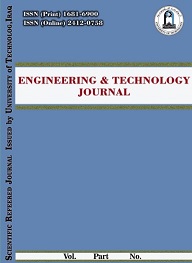Abstract
As far as thermal insulation is concerned, phase change materials (PCM) have a very good potential to be excellent insulation materials due to their thermal properties like low thermal conductivity and high latent heat. The researchers started to incorporate the walls and windows with PCM to reduce the internal surface temperature and indoor temperature of the room. This paper focuses on double and triple-glazed windows’ thermal performance, different filling insulation materials, ventilation windows, and thermochromic glazing. In addition, a detailed discussion on the effect of changing the thickness and the thermal characteristics of the PCM and its influence on the internal surface temperature, temperature time lag, and other parameters such as total energy transmitted and indoor temperature. Previous studies have shown that including PCM in triple-glazed windows decreases the temperature of the inner surface by 2.7℃ and 5.5℃ compared to double-glazed windows with PCM and triple-glazed windows. Utilizing ventilation during summer nights saves 46% on cooling energy. By using two different PCM melting temperatures, the maximum interior and surface temperatures are reduced by 6℃. The integrated PCM blind system prevented the room occupants from being exposed to direct sunlight. Finally, additional recommendations were made based on the identified research needs.
